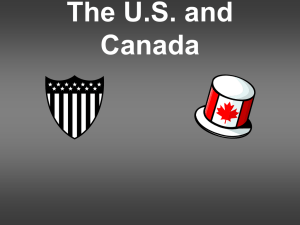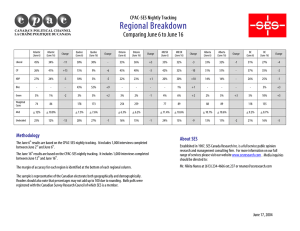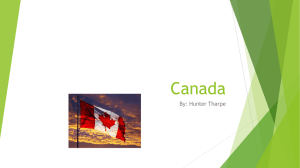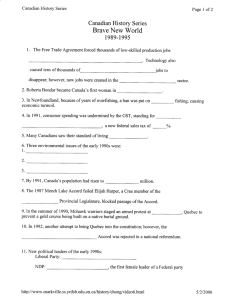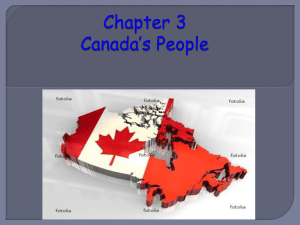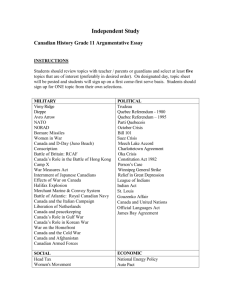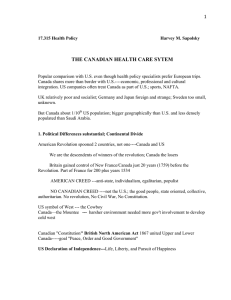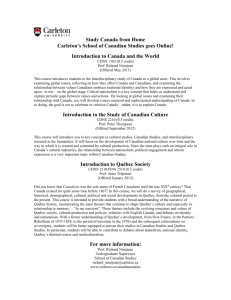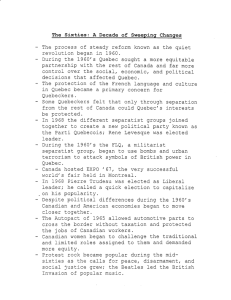canada study guide
advertisement
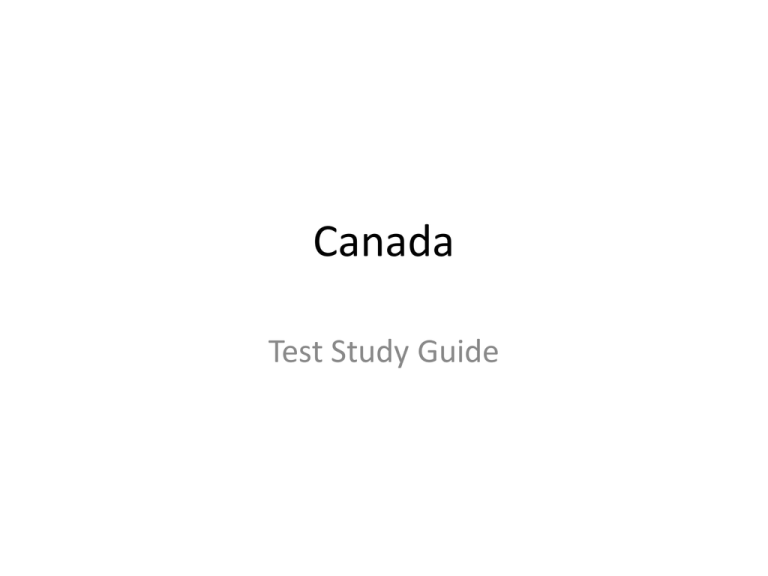
Canada Test Study Guide • Canada shares Lake Superior, Lake Huron, Lake Erie, and Lake Ontario with the United States (p. 175) • The Atlantic Ocean moderates the temperatures of eastern Canada Main Languages • English 58.7% • French 22% • The Northern Lands – Nunavut, Northwest Territories, and Yukon – are the least populated region in Canada. • Much of the area is covered by a subarctic climate zone with cold winters, and the areas farthest north have a tundra climate. • A tundra is a flat, treeless plain with permanently frozen ground. • (p. 173) • Canadians worry about cultural dominance, or takeover, from the United States • Canada’s government even promotes the production of Canadian movies and television shows • (p. 184) $$$ • East of the Atlantic Provinces is an area called the Grand Banks. • This part of the Atlantic Ocean is one of the world’s great fisheries, which are areas where fish come to feed in huge numbers. • The Grand Banks is visited by fishing fleets from all over the world. • This means lots of revenue! • (p. 174) First Nations • The first people to arrive in Canada came from Asia. • They came during a long period of intense cold called the Ice Age. • The first groups to arrive moved south because Canada was covered with ice. • (p. 176) • Ninety percent of Canadians live within 150 miles of the Canada-U.S. border • During the early 1800s, English and French communities disagreed over colonial government policies. • Fears of a U.S. takeover, however, forced them to work together. In 1867 the British colonies of Quebec, Ontario, Nova Scotia, and New Brunswick united as provinces of the Dominion of Canada. • (p. 178) • France and Britain fought wars in the 1700s. As a result of British victory in 1763, France was forced to give up much of its land in North America. • However, the Quebec Act, passed by the British in 1774, gave French settlers in Canada the right to keep their language, religion, and system of laws. • (p. 178) • Canada’s government is modeled on Britain’s • Voters elect members of the legislature, or Parliament • The party with the most members chooses the prime minister, who carries out the laws • The British king or queen is officially Canada’s king or queen as well (p. 182) Vancouver – busiest port Royal Canadian Mounted Police • Nicknamed Mounties • Symbolize Canadian law and order • Formed under the name North West Mounted Police in 1873 to help created order in the west, where there was a gold rush in the Yukon Territory • In the late 1600s, some British merchants formed a company called the Hudson’s Bay Company. They set up trading posts around the bay in the hope of gaining some of the profitable fur trade. • Today, they are still in business selling luxury clothing! • (p. 178) • Most Canadians live in the provinces Quebec and Ontario • Canadian government gave the First Nations more power by creating a new territory, Nunavut, for them in 1999. • (p. 186) • Canada’s biggest challenge might be staying together as a nation. • Some French people in Quebec called separatists want to create their own nation • The issue remains unsettled • (p. 186) • A signature dish in Canada is called poutine and consists of french fries, gravy, and cheese

